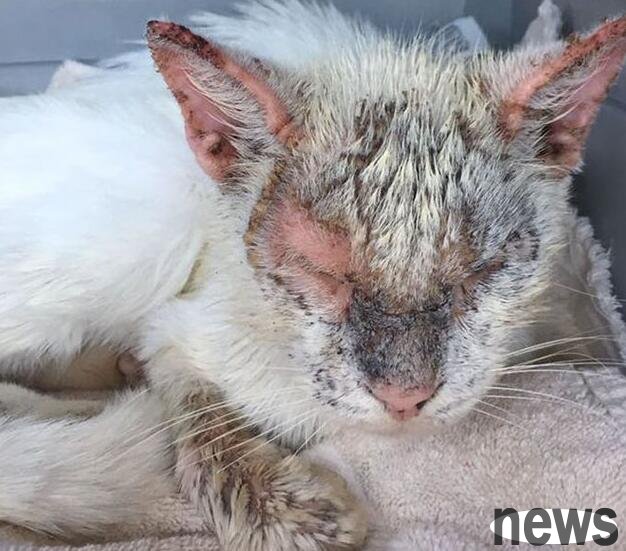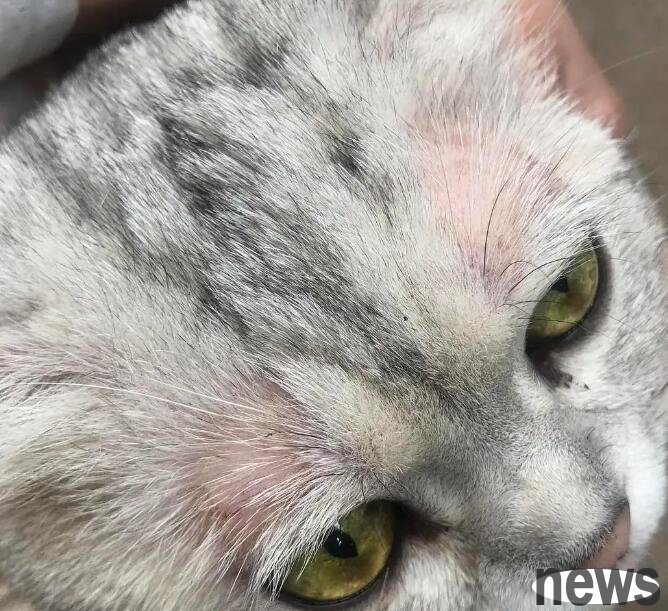There are many causes of skin diseases in cats, which may be caused by fleas, parasites, or fungal bacterial infections and allergies. After the skin diseases in cats occur, we will see red spots on the cats, and the place where the disease occurs w...
There are many causes of skin diseases in cats, which may be caused by fleas, parasites, or fungal bacterial infections and allergies. After the skin diseases in cats occur, we will see red spots on the cats, and the place where the disease occurs will ulcer or even pus. It will occur locally at the beginning, and if not treated in time, it will spread throughout the body. Therefore, we must provide timely treatment and care for cats after skin diseases. Have you learned how to treat skin diseases?
For the treatment of skin diseases, take medicine and infusion is a therapy. We can also use some auxiliary means to speed up the recovery of skin diseases, such as giving cats a medicinal bath. As the name suggests, it is to use medicine to act on the whole body of the cat, so that the affected part of the cat's skin absorbs the medicine to achieve the therapeutic effect. For skin diseases such as cat moss, medicinal baths often have good therapeutic effects. Medicinal baths can also remove excessive pathological secretions from the cortex and improve odor.
Of course, you need to choose a suitable bath solution when giving a cat a medicinal bath, that is, a suitable hair lotion. What causes the skin disease of a cat? We need to choose the corresponding hair lotion, such as fungal skin disease in cats, and we need to choose a hair lotion with antibacterial effect. We usually wash cats' hair once every 14 to 21 days, and when cats suffer from skin diseases, the interval should be shortened.

Cat shower gel on the market
When taking a medicinal bath for cats, there are the following points to be paid attention to:
1. Pay attention to the water temperature when bathing a cat, and do not overheat to avoid burning the skin.
2. In the medicine bath, the foam produced by the hair lotion must be allowed to cover the whole body of the cat and stay for 15 minutes. In order to ensure that the main pharmacological ingredients in the hair lotion are fully absorbed by the cat's skin, the owner can use a watch to time it.
3. Before using hair detergent, let the cat get wet all over. When applying hair detergent, apply the lesion area first to remove secretions from the lesion area, and then clean other parts.
4. After the foam residence time is over, rinse the cat's whole body with clean water. Do not leave too much hair detergent, otherwise it may irritate the cat's skin.
5. After the end, wipe the cat and blow dry. When drying, be careful not to use hot air.
6. Cats may have contact allergic reactions to hair detergents, but do not frequently change the type of hair detergents, nor do they use multiple hair detergents at the same time.

7. The cat's medicine bath must be once every three days in the initial stage of treatment. After that, the hair wash used can be changed according to the diagnosis and treatment results, and the time interval of the medicine bath can be extended to once a week or once a week according to the efficacy.
8. Do not expect excessive efficacy of the medicinal bath every time. Excessive frequent medicinal baths often damage the epidermis of the cat's skin, making the cat's epidermis too dry, and may also cause iatrogenic damage.
9. Pet hospitals can provide guidance on the cat owner's medical bath treatment, such as giving a written instruction, which can allow the owner to use hair detergent correctly, which can promote the treatment of cat's skin diseases.